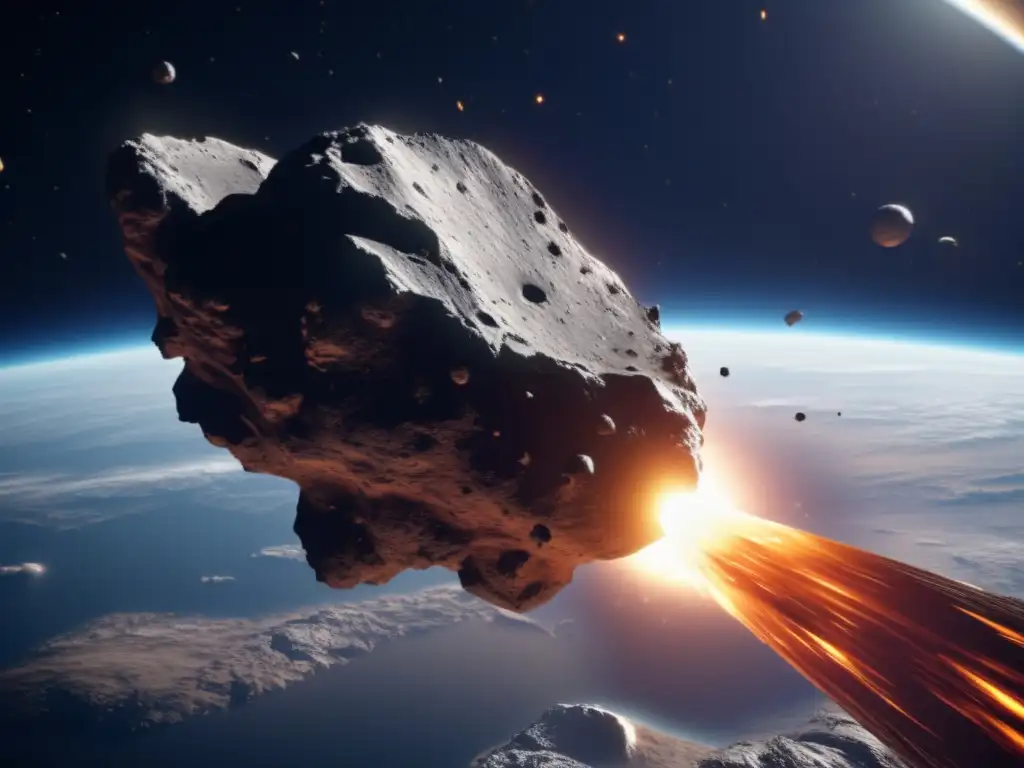Shielding The Planet: Techniques For Asteroid Defense

Introduction
As we continue to explore our solar system, the possibility of an asteroid impact becomes ever more real. The effects of such a collision could be catastrophic, causing widespread destruction and loss of life. To mitigate this threat, scientists and researchers are exploring various technologies aimed at protecting our planet from asteroids. In this article, we'll take a closer look at some of these technologies, as well as the challenges involved in implementing them.
Nuclear Devices

The Orion Project
The Orion Project was a proposal developed in the late 1950s that planned to use nuclear explosions to propel spacecraft. While the project never came to fruition, its underlying technology has been considered for asteroid defense. By detonating a nuclear device near an incoming asteroid, the explosion could alter its trajectory and prevent a collision with Earth. However, this approach is controversial due to concerns over the environmental and political implications of nuclear weapons.
The Hypervelocity Asteroid Mitigation Mission for Emergency Response (HAMMER)
Another concept involves using nuclear devices to intercept and divert an asteroid headed for Earth. The Hypervelocity Asteroid Mitigation Mission for Emergency Response (HAMMER) mission proposes sending a spacecraft equipped with a nuclear bomb to collide with and alter the trajectory of an incoming asteroid. However, this approach raises questions about safety and the potential for unintended consequences.
Benefits and Challenges
The use of nuclear devices for asteroid defense presents potential benefits, such as the ability to deflect large asteroids that would be difficult to move with other technologies. However, the environmental and political concerns associated with nuclear weapons have made this approach controversial. Additionally, the use of nuclear devices for asteroid defense requires precise timing and a clear understanding of the asteroid's trajectory.
Gravity Tractors

How Gravity Tractors Work
A gravity tractor is a spacecraft designed to alter the course of an asteroid by using the gravitational pull between the spacecraft and the asteroid. By positioning the spacecraft in close proximity to the asteroid, the gravitational attraction between the two objects can be used to gradually alter the asteroid's trajectory. This technology is based on the concept of gravity assist, which has been used in past space missions to accelerate and redirect spacecraft trajectories.
Benefits and Challenges
Gravity tractors offer a less aggressive approach to asteroid defense, as they do not involve detonating nuclear devices or physically colliding with the asteroid. Additionally, this technology has the potential to work on a wide range of asteroid sizes. However, the effectiveness of gravity tractors depends on the mass and density of the asteroid, as well as the precision of the spacecraft's trajectory and the duration of the mission.
Kinetic Impactors

How Kinetic Impactors Work
A kinetic impactor is a spacecraft designed to collide with an asteroid at high velocity, effectively pushing it off course and altering its trajectory. This approach does not require the use of nuclear weapons and has been studied extensively in recent years. The Double Asteroid Redirection Test (DART) mission, slated for launch in 2021, will test the effectiveness of this technology on the asteroid Didymos.
Benefits and Challenges
Kinetic impactors offer a more precise and controlled approach than nuclear devices. Additionally, they can be launched relatively quickly and do not require the development of new technologies. However, this approach is less effective on larger asteroids and requires careful planning and coordination to ensure success.
Laser Bees

The Laser Bees Concept
The Laser Bees concept proposes using a swarm of small spacecraft equipped with high-powered lasers to vaporize the surface of an incoming asteroid. The resulting vapor pressure would create a thrust that could slowly alter the asteroid's trajectory. This technology is still largely theoretical, but it has the potential to be highly effective for dealing with smaller asteroids.
Benefits and Challenges
The Laser Bees approach offers a highly precise and flexible method for asteroid defense, as the swarm can be programmed to target specific areas of the asteroid. Additionally, this technology does not require the use of nuclear devices and can be deployed relatively quickly. However, there are significant challenges involved in developing and coordinating a swarm of spacecraft, as well as concerns over the accuracy and power of the lasers used.
Frequently Asked Questions

-
Can we completely eliminate the threat of asteroid impacts?
While we cannot completely eliminate the threat of asteroid impacts, we can take steps to mitigate the risks. By developing technologies that allow us to detect and deflect incoming asteroids, we can significantly reduce the likelihood of a catastrophic impact.
-
What role do governments play in asteroid defense?
Governments around the world have recognized the importance of asteroid defense and have invested in research and development of related technologies. However, international cooperation is necessary to effectively address this threat.
-
What challenges must be overcome in developing asteroid defense technologies?
Developing effective asteroid defense technologies requires significant investment in research and development, as well as coordination between governments and international organizations. Additionally, there are challenges involved in accurately detecting and tracking asteroids, as well as ensuring the safety and reliability of the technologies themselves.
-
What can individuals do to support asteroid defense efforts?
Individuals can support asteroid defense efforts by staying informed about the latest developments in the field, advocating for increased funding and research, and supporting organizations that are working on this issue.
-
How likely is a catastrophic asteroid impact?
While the likelihood of a catastrophic asteroid impact is relatively low, the potential consequences of such an event make it a significant threat that must be addressed.
Conclusion
Asteroid defense is an important and ongoing area of research and development. As we continue to explore our solar system, the need to protect our planet from the threat of asteroid impacts becomes ever more pressing. By investing in and developing new technologies, we can significantly reduce the risk of a catastrophic impact. It is up to all of us to make this a priority and work together to safeguard our planet from this potential threat.
Thank you for taking the time to read this article. Please share your thoughts and comments below, and consider subscribing to www.asteroidrealm.com to stay up-to-date on the latest developments in this important field.
Additional Resources

For more information on asteroid defense, check out the following resources:
- NASA's Planetary Defense Coordination Office: https://www.nasa.gov/planetarydefense
- The B612 Foundation: https://b612foundation.org/
- The Asteroid Institute: https://www.asteroidinstitute.org/
 Beyond Impact: The Science Of Planetary Defense
Beyond Impact: The Science Of Planetary Defense Mission Asteroid: The Blueprint For Planetary Defense
Mission Asteroid: The Blueprint For Planetary Defense Stellar Shield: The Role Of Technology In Asteroid Defense
Stellar Shield: The Role Of Technology In Asteroid DefenseIf you want to discover more articles similar to Shielding The Planet: Techniques For Asteroid Defense, you can visit the Planetary Defense category.
Leave a Reply

Articulos relacionados: